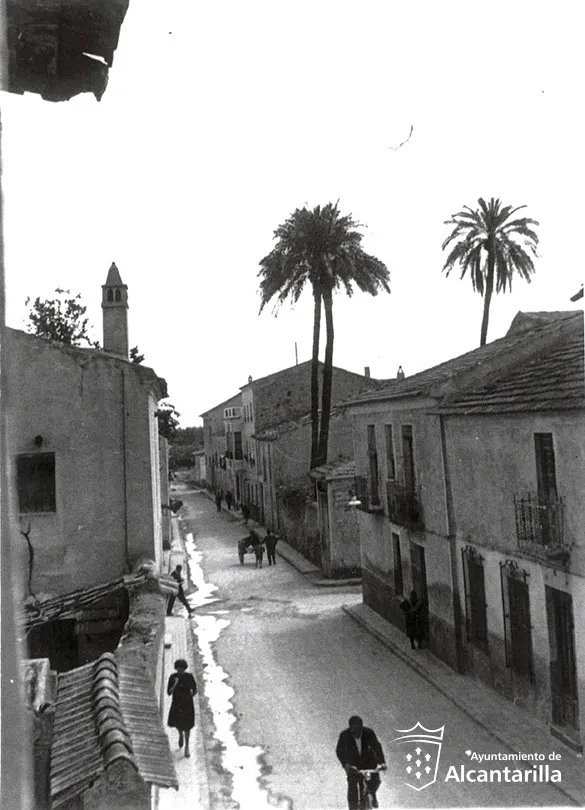
This is one of the streets that make up the old quarter of the town, since the population moved to the Barrio de San Pedro in the second half of the 16th century. In the 18th century it was called Calle Horno, connecting Calle Mayor with San Sebastián and the Placeta, now Plaza del Olmo, and ending in Calle Procesiones, which bordered the orchard and the Camino de la Piedra. In the 19th century, it was renamed Calle Rosario, due to the influence of the Brotherhood of María Santísima del Rosario, founded in 1581.
In the 1960s it was mainly made up of traditional houses with ground and first floors, with courtyards or orchards with palm trees overhanging their walls, such as the property of Francisco Díaz in front of the Plaza del Olmo, or the three-storey emblazoned house located on the same pavement, near the corner of the Calle Estrecha.
At the beginning of the 20th century, up to three bread bakeries were established around this old Calle del Horno, which could be accessed from Calle Mayor: the bakeries of “María Marcelina”, “del Pon” and “de Pepe del Horno”, which was on the corner of Calle Val, the old passage of the irrigation ditch that connected with Calle San Sebastián.
At the end of the 1960s, Calle Rosario was extended until it reached Camino de la Piedra. Since 1981, a commemorative plaque commemorates the IV Centenary of the founding of the Brotherhood that gives it its name.

